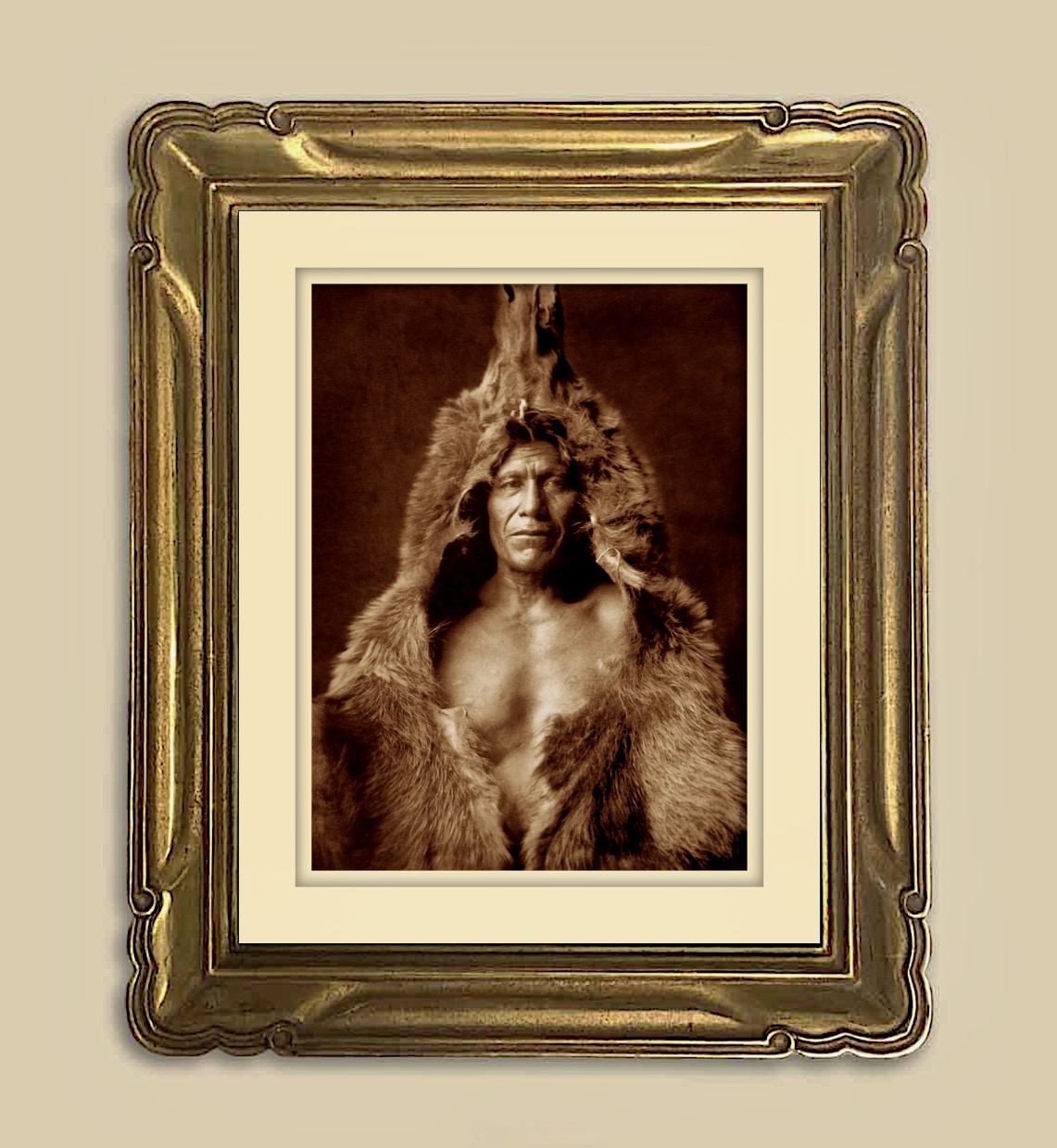

Title: Bear's Belly, Arikara Indian By historical photographer Edward Curtis
Shipping: $29.00
Artist: N/A
Period: 20th Century
History: Art
Origin: North America > United States
Condition: Excellent
Item Date: N/A
Item ID: 615
Bear's Belly, Arikara Indian (c. 1847-1908) This half-length portrait of Bear's Belly, an Arikara Indian, captures him facing the camera, wearing a bearskin. The photograph, taken by Edward Sheriff Curtis, is an original print created and published circa 1908. Born in 1847 in what is now North Dakota, Bear’s Belly was a highly respected and honored warrior of the Arikara tribe. He became a member of the Bears in the Medicine Fraternity, a role that symbolized his esteemed status. The portrait is part of a vintage photogravure, measuring 22 x 18 inches, from Curtis’s 1908 portfolio. Plate 150, titled "Bear's Belly - Arikara," commemorates this iconic figure. Bear’s Belly earned his bearskin in a dramatic encounter, where he single-handedly killed three bears, solidifying the bearskin as a sacred symbol in his life. He recounted the story as follows: "Needing a bearskin for my medicine-making, I ventured into the White Clay hills. Suddenly, I found myself at the brink of a cliff, looking down at three bears below. Although I wanted a bear, I knew it would be difficult to fight three at once. Nonetheless, I decided to try. I descended and crept up to within forty yards of them. I waited until two were close together, then pulled the trigger. The farther bear fell; the bullet had passed through the body of one and into the brain of the other. The wounded bear charged at me, and I ran, reloading my rifle. I turned and shot again, breaking its backbone. It lay on the ground only ten paces from me. Suddenly, a noise reminded me of the third bear, which was now rushing toward me, only six or seven paces away. I yelled to keep up my courage, and the bear, growling in anger, rose on its hind legs. I fired, with my gun nearly touching its chest. The bear with the broken back was dragging itself around with its forelegs. I approached it and said: 'I came looking for you to be my friend, to be with me always.' Then, I reloaded my gun and shot it through the head. I kept its skin, but sold the other two." This narrative is part of Volume V, The North American Indian, published in 1908, which features Bear's Belly and his extraordinary tale of bravery.
Edward S. Curtis (1868-1952) was an American photographer and ethnologist renowned for his extensive work documenting the lives and cultures of Native American tribes in the early 20th century. Beginning his ambitious project in 1906 with the support of financier J.P. Morgan, Curtis spent over 20 years photographing and recording the customs, traditions, and everyday life of more than 80 tribes. His work, culminating in the monumental 20-volume series "The North American Indian," is considered one of the most significant ethnographic records of Native American cultures. Curtis's dedication to preserving this heritage has left an enduring legacy in both photography and anthropology.